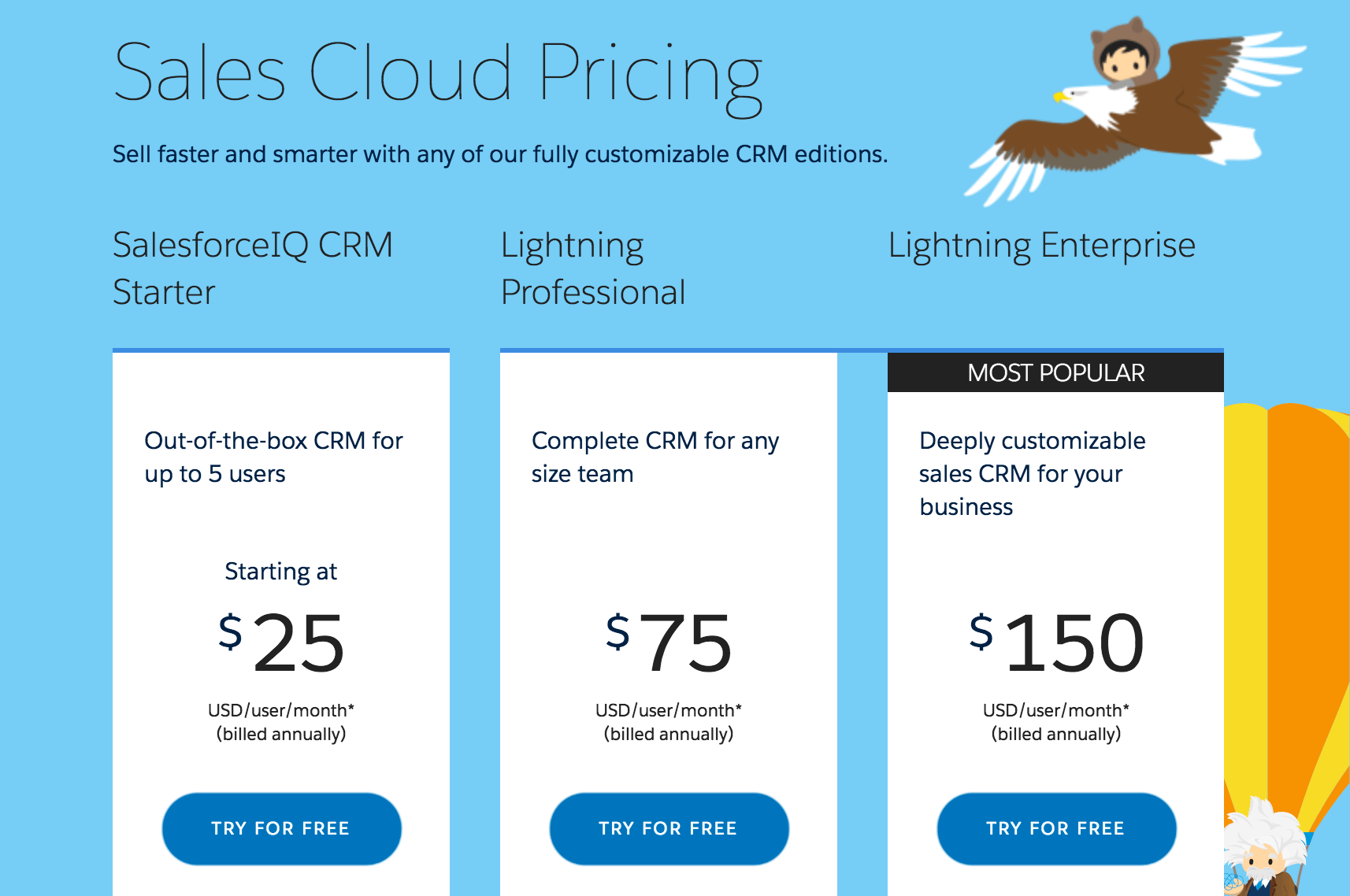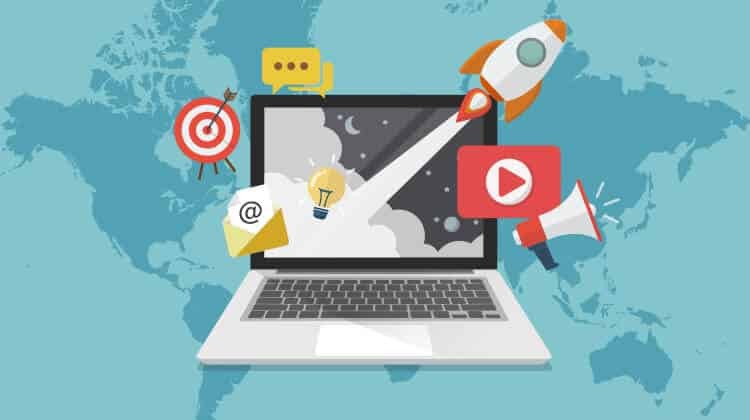What is Digital Marketing?
by Aden Andrus • April 22, 2020
By Aden Andrus
What digital marketing does for a company depends on the goal of each type of marketing content, which includes increasing brand awareness and industry authority, boosting web traffic, and increasing overall leads and revenue.
Marketing your company online is a big deal these days. After all, internet usage has more than doubled over the past decade, and this shift has massively affected how people purchase products and interact with businesses.
What is Digital Marketing?
Like any other type of marketing, digital marketing is a way to connect with and influence your potential customers. The difference is that you do so online through a combination of digital marketing channels that include video content, social media posts, content marketing, web and social media advertisements, and search engine marketing.
Companies reach goals through the above means instead of using traditional marketing strategies like billboards, television ads, and promotional mail sent to consumer residences.
Common Digital Marketing Assets
Almost anything can be a digital marketing asset, meaning any marketing tool that you use online. That being said, you may not realize how many you have at your disposal. Here are a few examples:
- Your website
- Branded assets (logos, icons, acronyms)
- Video content (video ads, product demos)
- Images (infographics, product and company photos)
- Written content (blog posts, eBooks, product descriptions, Help Sections, “learning center-type” content or online courses)
- Online products or tools (SaaS, calculators, interactive content)
- Reviews
- Social media pages
As you can probably imagine, this list only scratches the surface. Most digital marketing assets will fall into one of these categories. However, clever marketers are constantly coming up with new ways to reach customers online, and the list keeps growing.
Common Digital Marketing Strategies
Though the list of digital marketing strategies is also constantly evolving, these are some of the most common and effective strategies that businesses are using:
Pay-per-Click Advertising
Pay-per-click (PPC) advertising is a broad term that covers any online marketing where the advertising business pays for each time a user clicks on an ad. For example, Google AdWords is a form of PPC advertising called “paid search advertising.” Facebook Ads are another form of PPC advertising called “paid social media advertising.”
Paid Search Advertising
Paid search advertising is one of the best ways to target potential customers actively searching for a product or service like yours. Google, Bing, and Yahoo allow you to run ads on their Search Engine Results Pages (SERPs).
According to Google, 91% of users are searching from their mobile devices. All of your PPC and paid search advertising campaigns should be optimized for mobile so your business isn’t missing out on all of those clicks and potential customers. If you’re missing the mark on this, you need to revamp your digital marketing strategy ASAP.
Paid Social Media Advertising
Social media platforms like Facebook, Instagram, Twitter, LinkedIn, Pinterest, and Snapchat allow users to pay for digital media marketing ads on their sites. Paid social media advertising is great for building awareness with audiences who might not know that your business, product, or service exists.
Search Engine Optimization
Search Engine Optimization, commonly known as SEO, is the technique used by digital media marketing professionals to get pages and blog posts to rank organically on SERPs. It takes more skill and know-how to get on the front page of Google with SEO than with paid search advertising, and it can be time-consuming.
Social Media Marketing
Like SEO, social media marketing is the free, organic way to use platforms like Facebook or Twitter to market your business through digital means. Unfortunately, organically marketing your business on social media takes more time and effort than paid advertising. Still, it can be very effective when you’re operating on a tighter budget. Social media marketing is one of the best digital marketing strategies you can use, even if you don’t pay for it.
Conversion Rate Optimization
Conversion rate optimization (CRO) improves the online user experience to maximize the number of users who perform a desired action known as converting. This can be as simple as getting them to click on a link and sign up for your newsletter. Businesses often use CRO to get leads, chats, calls, and sales from their existing website traffic and increase those conversions.
Content Marketing
Content marketing is another broad digital marketing term. Content marketing covers any digital marketing effort that uses content assets (blog posts, infographics, eBooks, videos, etc.) to build brand awareness or drive clicks, leads, or sales. Most importantly, when you combine these elements the right way, you develop a clear online marketing strategy for your business.
Native Advertising
Have you ever noticed that at the bottom of an article you’re reading, there is often a list of suggested articles? That’s native advertising. Most of it falls under content marketing because it uses content to attract clicks (“You’ll never believe what happens next!”). Often, it can be difficult to spot because it is usually mixed in with non-paid content recommendations. Of course, that’s kind of the point.
Email Marketing
Email marketing is the oldest form of online marketing, and it’s still going strong. Most digital marketers use it for advertising special deals, highlighting content, or promoting an event. It offers opportunities to reach users who may not be on many of the more popular platforms, like social media.
Affiliate Marketing
You use affiliate marketing to pay someone else — a person or a business — to promote your products and services on their website.
There are many ways to market your business online, which is why many companies outsource their online marketing efforts or pay for an in-house team and automation software to cover their marketing needs. This is one area where spending a little money can definitely improve your return on investment (ROI).
Does Digital Marketing Work?
Digital marketing is an excellent option for any business looking to take advantage of the marketing resources available and succeed in an increasingly digital world. At Disruptive, we’ve used it to help all kinds of businesses grow — including home service companies like mom-and-pop shops and larger entities like internationally-recognized universities. That’s the beauty of advertising online. If you know the demographics you want to target, using digital means can reach anyone, anywhere.
However, certain types of businesses will benefit more from specific types of digital advertising. As a quick overview, let’s take a look at which strategies tend to work best for business-to-consumer (B2C) companies and business-to-business (B2B) companies:
B2C Companies
Generally speaking, B2C companies have much lower price points than their B2B counterparts. After all, it can be a little hard to sell a $150,000 drill bit (believe me, they exist) to a harried mom. But an inexpensive pair of kid’s pants? That’s a reasonably straightforward sell.
The good news is that, because B2C companies aren’t trying to sell incredibly expensive products or services, they don’t need big sales teams or complicated marketing funnels. All they have to do is get their products or services in front of the right audience with the right messaging, and the rest should take care of itself.
As a result, the primary goal of most B2C companies is to guide the customer journey into and through their marketing funnel. For example, if you can get that mom onto your kids’ clothing website and offer her an exciting deal, there’s a good chance that she’ll make a purchase today. You don’t need to build a ton of brand awareness or trust before you close a sale.
With that in mind, B2C companies often see great results from higher-funnel digital channels like social media marketing and paid social advertising. These channels do a great job of getting your business in front of potential customers who might not otherwise know that you exist.
Supplementing with other digital marketing strategies like paid search or SEO is always a good idea. If you have to pick one of the digital channels to start with, paid social advertising or social media marketing are great options for B2C.
B2B Companies
In contrast, paid search is a great option for B2B digital media marketing campaigns. Most have very specific, niche audiences that can be hard to target using social media. However, if you sell $150,000 drill bits and someone searches for a “diamond-tipped oil drilling bit manufacturer,” you want to be the first result they see. Yes, you might pay more for your click than you would with paid social advertising, but with a $150,000 price tag, it’s money well spent.
In addition, most B2B companies have a much longer and more involved sales cycle than B2C companies. If you’re selling a $150,000 drill bit, most people probably don’t go to your website, give you a call, and say, “I want one.” As a result, longer-term strategies like content marketing or email marketing are often necessary to close a deal.
Of course, the right blend of digital marketing tactics will vary from industry to industry and business-to-business, but simply comparing B2C to B2B should help give you a sense of how different strategies can be better for certain businesses. Not every strategy is suitable for every business, but with a bit of trial and error, you should be able to identify the most profitable approach for your company.
How Do I Get Started?
The good news is that getting started with digital media marketing is relatively easy. Most online advertising platforms make it simple to sign up and create your first campaign, complete with data and analytics resources for successful management. Here are a few links to beginner guides for several different digital marketing strategies:
- Paid search advertising
- Search engine optimization (SEO)
- Paid social media advertising
- Social media marketing
- Conversion rate optimization
- Content marketing
- Email marketing
The core of every successful digital marketing campaign, however, isn’t a guide. Regardless of which strategies you choose to use, here are four questions you need to answer before getting started with digital marketing campaigns:
1. How Much Do You Need To Make?
Figuring out what you need to spend on digital marketing means you first need to clarify your goals. How you approach digital marketing can vary quite a bit depending on whether your ultimate goal is to drive clicks, conversions, leads, sales, revenue, or a certain ROI.
The end goal of any marketing effort should be ROI. If digital marketing isn’t driving profitable revenue for your business, your online marketing strategies aren’t resonating with consumers. At that point, it would be wise to develop a new approach.
Clicks and conversions are great, but your company doesn’t make money from clicks or conversions. Sales drive revenue.
With that in mind, the first thing you need to determine before you decide what your digital marketing budget should be is how much revenue you want to drive. You can use that information to decide how much ad spend it will take to reach your revenue goal.
2. To Whom Are You Marketing?
The next step is identifying to whom you are marketing through digital channels. This is critical because different buyer personas require different marketing tactics. And, even more importantly, different buyer personas turn into different types of buyers.
If your organization has a dedicated sales team, asking them for input can be one of the fastest ways to get a clear buyer persona while collecting data to develop your digital marketing strategy. After all, sales teams are typically the team members who talk to your customers the most.
However, talking to your sales team and doing a little research isn’t enough to get the level of detail you need to create an effective digital marketing plan. To do that, you need to get on the phone and call your customers. Though you may not always get much more from your customers than, “Your company came up on Google,” this is still valuable data and gives you insight into the fact that your existing digital marketing is working to some degree.
Ask how they found you, why they converted, and what convinced them to become a paying customer. This information will give you a ton of insight into your marketing and sales process. You can learn from that to improve your advertising programs’ performance and choose your marketing budget.
3. What are Your Customers Worth?
Typically, people look at buyer personas as a good way to craft an effective marketing strategy. Buyer personas are great for this, but they are also an important part of putting together an effective digital marketing plan.
For example, imagine you are advertising for a SaaS business called SaaS-A-Frass that has the following pricing structure:

- Small business
- Mid-market business
- Enterprise business
A small business has much smaller and simpler needs than the other two, so it will probably choose a starter package. The mid-market will probably want a professional package, and the enterprise will likely need an enterprise package.
An example to keep in mind when determining what your customers are worth:
The lifetime value (LTV) of a small business that buys five $500 services from your business per year is higher than the LTV of the enterprise that buys one $1,500 service once a year. It’s tempting to focus your efforts on enterprise-level clients because they bring in higher revenue at once. However, it is often more cost-effective on ad spend and results in more revenue to find and retain small business customers rather than once-a-year enterprise clients.
Assuming that each of the buyer personas is around for an average of 14 months, four years, and nine years, respectively, (average lifetimes for a SaaS client) and buys 5, 20, and 100 licenses, respectively, here’s the lifetime value for each of these personas ( [licenses/mo] x [# of licenses] x [typical customer lifespan in months] ):
Lifetime Value
- Small: $1,750
- Mid-market: $72,000
- Enterprise: $1,590,000
These numbers look exciting, but not all of that money is profit.
A SaaS company pays about 22% for fulfillment, 9% to sales, and has a 40% overhead, leaving them with about 29% of the LTV of each client to play around with. That means to break even, you have to spend less than the following to acquire a customer from Facebook:
Maximum Acquisition Cost (MAC)
- Small: $507.50
- Mid-market: $20,880
- Enterprise: $461,100
If you can keep your customer acquisition cost (CAC) below this threshold, you’ll make money. If it costs more to acquire these customers, you’ll lose money.
Of course, it’s unlikely that the market is saturated with enterprise-level customers, so you’ll need a mix of these deals to hit your revenue goals. That will dictate your Facebook budget. Oftentimes, businesses find the LTV of their small business customers to outweigh that of their enterprise-level customers. In response, they alter their digital marketing campaigns and redirect ad spend to acquire and retain more of the small business customer base.
So, if you’re willing to spend $0.18 on digital marketing to produce $1.00 in LTV (for an 11% total profit margin), you can afford to pay the following for each buyer persona:
Customer Acquisition Cost (CAC)
- Small: $315
- Mid-market: $12,960
- Enterprise: $286,200
If you can’t produce paying customers from a particular buyer persona at a price point below this threshold, you probably shouldn’t be marketing to that buyer persona.
However, suppose your digital marketing efforts currently produce buyers from each persona at or below these CAC. In that case, you can use that information to calculate your digital marketing budget.
4. How Much Do You Need To Spend To Reach Your Goals?
Take your CAC, average purchase order value, and the average number of purchases (if you have a subscription model, you can use the average lifespan of each buyer persona here) and plug them into these equations to determine your digital marketing strategy LTV to CAC ratio:
- LTV= [Average monthly revenue per customer in US dollars] X [Life span of the customer in months]
- CAC= [Total cost in dollars to acquire customers in this buyer persona] / [Number of new customers acquired from the digital marketing campaign]
The ideal ratio for LTV:CAC is 3:1 per twelve months, meaning the value of the customer should ideally be three times more than the cost of acquiring them as a customer. A ratio closer to 1:1 means you’re spending far too much on acquiring clients. A ratio that’s higher than 3:1 means you’re likely missing out on business by not bumping up your digital marketing efforts to reach more potential customers.
Now, as you might imagine, this approach isn’t a perfect estimate of what it will take to hit your revenue goals. This is only as accurate as the information you provide. But, it’s a lot better than picking your monthly at random and hoping that digital marketing will produce the results you need.
How Is Digital Marketing Different on Mobile?
Digital marketing on mobile is very different from digital marketing on desktop. These differences are significant because smartphones are now the primary device people use to interact with the internet.
With over 50% of internet activity occurring on mobile devices, the shift from desktop to mobile has profoundly affected digital marketing.
Google Ads got rid of the sidebar ads on their results pages to create a consistent experience between mobile and desktop. Facebook Ads followed suit at some point in the last five years, no longer showing sidebar ads on desktop or mobile and instead only showing in-stream ads. This article has been updated to reflect this change in Facebook Ads’ in-app marketing approaches and placement that it allows businesses to use. This section used to read that on desktop, Facebook still showed sidebar ads. This is a great example of a continuous adaptation of digital marketing methods and strategies to maximize ROI.
In addition to optimizing your ads for mobile, it’s also essential to think about your site and landing page experience. Sure, your website might look beautiful on a desktop screen, but if it’s impossible to navigate on mobile, you’ll end up alienating a significant percentage of your web traffic.
At a minimum, you should have a mobile-responsive website. Ideally, a mobile user’s experience (UX) should be designed to allow users to easily access as many of the features on a desktop site as possible.
Whether most advertisers realize it or not, digital marketing is primarily a mobile experience now. The good news is, if you’re relatively new to digital marketing, you don’t have to worry about reinventing the wheel. You can start by coming up with compelling mobile advertisements and then adapt as needed for desktop.
Taking the Next Step on Digital Marketing
Digital marketing is the marketing of the future. Another valuable benefit of it is that you can easily and accurately track the results of your efforts using analytics tools to collect relevant data. It’s easy to see which strategies are producing profitable results and which ones need some work.
If this article has convinced you that you need digital marketing or need to improve your current strategy, we’re here to help you do that. We love helping businesses grow with digital marketing strategies and solutions.
Did I miss something in this article? Have additional questions about digital marketing? Let me know in the comments!





